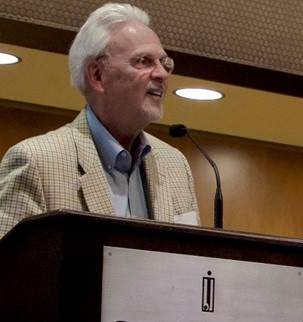Dennis Caine publishes two articles on growth plate injuries in youth sports

Dennis Caine, professor emeritus of Kinesiology and Public Health, co-authored two articles in the April 2022 issue of Sports Medicine, a top-tier sports medicine journal which bridges the gap between science and practice in the promotion of exercise and health, and in the scientific assessment, study and understanding of sports performance. Reflecting international collaboration, co-authors for the articles include: Nicola Maffulli, MD, Ph.D. (Salerno, Italy); Rachel Meyers, PT, DPT (Cincinatti, OH); Völker Schöffl, MD, Ph.D. (Bamberg, Germany); and Jie Nguyen, MD, MSc. (Philadelphia, PA).
The two articles focus on primary periphyseal stress injury (PPSI), an overuse injury which may affect the epiphyseal-physeal-metaphyseal (EPM) complex of long bones around the shoulder, elbow, wrist, hand, knee, ankle and foot of child and adolescent athletes. Dysfunction or injury to the EPM complex can lead to future growth disturbance, including limb length discrepancy, angular deformity, and altered joint biomechanics. This injury is of particular concern given that the limit for the mechanical tolerance of the EPM complex in children and adolescents may be exceeded by the intense and continuous training characteristic of many youth sports today.
The first article, titled “Primary periphyseal stress injuries in youth athletes: a systematic review,” describes the present status of knowledge on the occurrence and outcome of PPSIs affecting children and adolescents in a variety of youth sports that involve high-impact repetitive injuries. Most of the 128 published studies reviewed are clinical reports of one or more cases of PPSI. Although incidence data are lacking, data arising from cross-sectional studies showed that PPSIs may be common in select groups of young athletes, such as the shoulder of baseball players, wrist in gymnasts and platform divers, and fingers in rock climbers. When diagnosed and treated with an appropriate period of rest and rehabilitation, most patients studied were able to return to their former sports activities. However, study results also show that about one in ten diagnosed cases of PPSI produced skeletal growth disturbance.
The second article, “Inconsistencies and imprecision in the nomenclature used to describe primary periphyseal stress injuries: towards a better understanding” is a Current Opinion piece which examines the inconsistent and imprecise nomenclature historically used to describe PPSIs, and offers an explanation on the nature and cause of these injuries. Recommendations for appropriate use of terminology are also provided and a novel framework for better understanding of the pathophysiologic mechanisms underlying PPSIs is proposed.
Dr. Caine came to UND in 2007 after a national search and served as chair of the Kinesiology and Public Health Education department for two three-years terms, including one year as interim dean of the College of Education and Human Development. Following retirement in June of 2015, Dennis and his wife Caroline moved to an active retirement community in Georgetown, TX, where they continue to participate in swimming and ballet, respectively.
